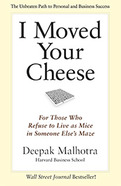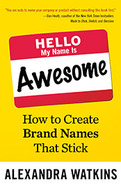BK Blog Post
Where should I Pitch My Book Proposal?
 Posted by
Anna Leinberger,
Editorial Manager, Acqusitions,
Berrett-Koehler Publishers Inc.
Posted by
Anna Leinberger,
Editorial Manager, Acqusitions,
Berrett-Koehler Publishers Inc.
Anna is a writer and editor for Berrett-Koehler in Oakland, CA. More on killer book proposals and writing can be found on her BK Blog.
This morning I had an email waiting for me in my inbox that amounted to a query letter for a photo book. It looks like a great project- beautiful cityscapes from above. There is just one teensy problem- and that would be that our publishing company does not do photo books, and actually cannot. I am writing today about how to figure out which publishing company to pitch because this is actually a bit counterintuitive. The logic that would guide you to just the right publisher is not as straightforward as it seems.
Subject Expertise
Now I would hope that most people could figure out that you generally want to pitch a publisher that publishes something similar to the book you are envisioning. The trick is that different categories are not necessarily obvious. The first division of course would be whether the book is fiction or non-fiction. This sort of delineation has to do with the subject expertise of any given publishing house or imprint. There are many different types of editing, and saying you are an “editor” does not imply that you do all types of editing. Editing fiction is a completely different skill than editing non-fiction. Many editors can do both, but that is not always going to be the case. An acquisitions editor (i.e. the person that has the power to offer you a book deal) also needs to have broad knowledge of the particular landscape of a genre. Here at BK, we do business books. We know what books are out, what is popular, what flopped. You want to be working with an editor who knows the field you are trying to publish within. They know what works and what doesn’t- they will be able to help you frame your book so it makes a splash in the marketplace.
Fiction/Non-fiction is not enough.
This dichotomy is just the tip of the iceberg, however. Within each of those broad categories there are a multitude of genres. Some examples within fiction: TOR publishes fantasy, sci-fi, and horror. Other publishers do strictly literary fiction. Still others do romance. Sometimes imprints or houses will do more than one genre, but always verify that the place you are pitching publishes the specific genre of your book. This is true of non-fiction as well. Even though BK has three imprints and publishes a wide range of non-fiction books, we do not publish everything. For example, we do not publish memoir. For me, this is an example of the narrowing of my editorial expertise. I don’t read memoirs, and I don’t really like them either. I don’t know what makes a good memoir, and I have no idea what will sell in the marketplace. You need to get very very specific- look at the publisher’s website, and really look at what they do and don’t have in their list. Only pitch them if your book falls well in line with what you find.
Marketing Channels
Marketing and PR, much like editing, are similarly niche. Publicists have specific media contacts, and those media contacts have their own specific audience. The marketing department at a business publisher will have contacts all over the business media, but not in the parenting sphere. Another example, BK does not have marketing contacts or sales channels in the Christian publishing world, so if we published a book on Christianity, we would not be able to market successfully to those audiences. Taken even deeper, if you wanted to publish a book on personal development that featured a botanical metaphor, a gardening publisher would still not be the right place. The gardening publisher has specific companies, bookstores, and sales channels that they have built and nurtured. A personal development book would not be of interest to the landscaping community, even if the book used plants as some sort of metaphor.
And the twist….
And now for the criteria most people find least obvious. I began this post with an example of someone pitching a photo book to me. We would never do a photo book simply because of the physicality of the book. Putting together a photo book requires a production department that specializes in designing that sort of book. Our books are black and white printed interior, very few graphics, and rarely a few color image inserts. Our production department is talented, but it does not specialize in that specific sort of design work. Printing our books is a fraction of the cost of printing a book on large, heavy, glossy paper, in color. Our business model is just not set up for that sort of investment into one project. The only way we would be able to make a book like that work would be to partner with a publisher who does. So in addition to paying very close attention to genre- also look at the books from that publisher. Find a publisher whose books physically resemble the book you are envisioning.
What book proposals and resumes have in common
The refrain of many a job-seeker, and many an aspiring author is the same: you have to send out 200 (resumes/proposals)! It is just the reality that you have to try AS MANY avenues as possible to have a chance at success. This is not actually the case. If you send 50 proposals out, all generic and addressed to “Dear Editor” to 50 publishers without researching them, and none of those publishers are in line with your project, you have not actually increased your odds, you have wasted your time. On the other hand, if you send ten proposals, each following specific proposal guidelines of publishers you have thoroughly researched and who publish in your field or genre, you will have vastly increased your chances of a successful pitch. Even if you do not get a book deal right away, an editor with deep knowledge of the publishing landscape may just get back to you with some valuable feedback. I think that is worth a few hours of work, don’t you?





